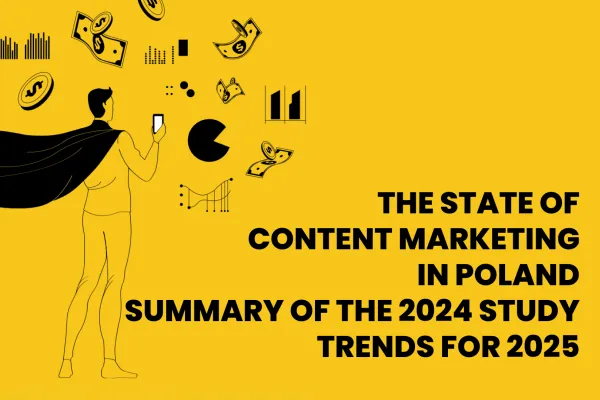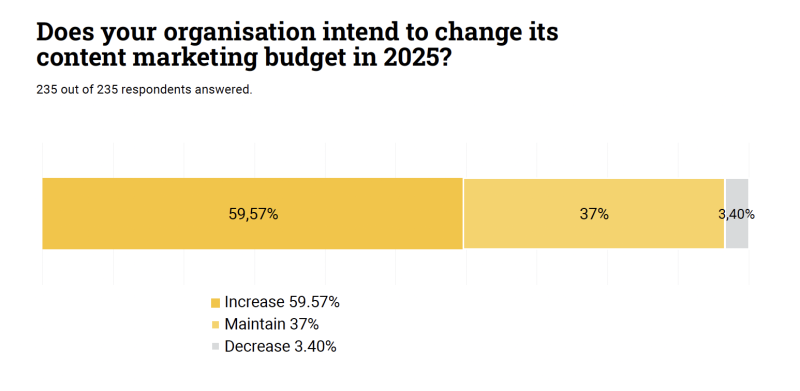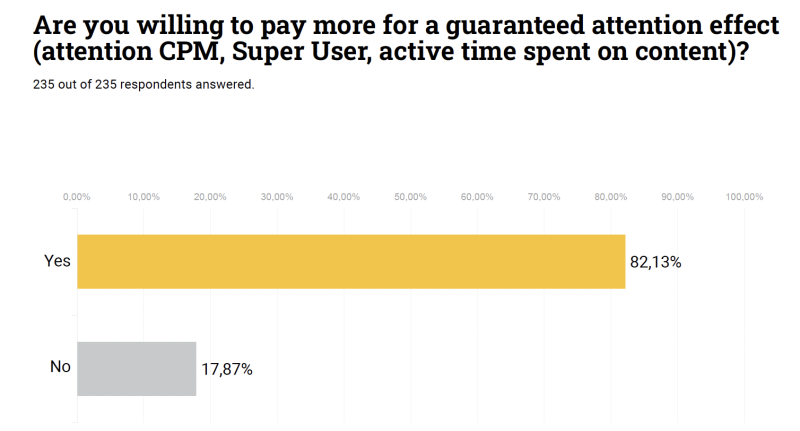
 Details
Details
Poland’s annual Content Marketing Report shows a growing maturity within the industry and a distinct movement towards a mature market for content marketing.
With this change comes a need for marketing professionals to ensure their strategies are in line with these developments or they risk being left behind in a competitive world.
Marketing isn’t an exact science; it’s an industry in constant flux and development, changing in response to a variety of factors around it. With this comes a need for marketing professionals to ensure their strategies are in line with the latest developments, or they risk being left behind in a competitive world.
That’s why we’re delighted to share this English version of a report from Poland’s Content Marketing Association, which is a thorough insight into the current state of content marketing.
The Native Advertising Institute spoke to Agnieszka Gajzler, President of Polish Content Marketing Association and Managing Director of TV & Digital Content Growth at Wirtualna Polsa, who has been responsible for the report since 2017, to discuss her first-hand insights into the main findings.
The report shows a market that has reached a level of maturation in relation to content marketing: spending is rising, senior decision-makers are involved, and brands are starting to judge content marketing based on quality and engagement. It’s an exciting time and a clear sign that content marketing is now a significant player in media.
Download the report to take a look - or read on to learn more about the key findings and insights.
1. Content marketing is more important than ever
The first thing to note from the report is that content importance and content formats are changing. With 60% of companies planning on increasing their budget for content marketing, and only 3.4% planning on decreasing it, it’s obvious that content marketing is becoming a vital priority for companies.
Agnieszka comments further: “Over 70% of the budget is going to production, including video content, text content, audio content - the content production is the biggest part and that’s very uncommon.”
2. Content matters to leadership
Content marketing used to be associated with a small corner of the marketing team, and often a junior professional. That’s no longer the case.
The report shows that over 14% of the companies now invest more than one million zlotys (Polish currency, approx. $270,000) annually in content marketing.
Just a few years ago, even half of this number would be unthinkable for a single company within Poland, explains Agnieszka, who has been leading this research for the past six years.
“Content marketing and native advertising was perceived as something where we don’t know what it is, so we’re going to give this to junior specialists, and now it’s in the hands of managers and directors, so this is one of the good things”.

3. From leads to long-term relationships
One of the most interesting findings is related to how the use of content has changed. Where in previous years, companies have viewed content marketing as an important tool for lead generation and sales, these numbers have significantly decreased.
Agnisezka explains further: “60% of the surveyed organisations say that content marketing works well and is good for building awareness and engagement, that’s huge. They’re perceiving it as a long-term relationship building with the brand. And this is really good because it leads us to the quality indicators”.
4. The attention economy has arrived
The report highlights the growing focus on attention economy metrics, with companies willing to pay for quality audiences, meaning those who engage with content over longer periods of time, such as reading an entire article or watching a video through to the end.
The report shows that 82% of companies are happy to pay for guaranteed attention effect, showing quality that results in engagement is a top priority. Extrapolating these statistics in relation to company size, 100% of the largest companies surveyed stated that they would pay more for this. Both of these numbers show the awareness that quality content matters more than ever.
However, there are still limited definitions and understandings of the metrics of quality due to this focus on quality still being in early stages. While many companies are prepared to pay for ‘super users’ (those who engage deeply in content), only 30% of them could define what a ‘super user’ was. Standardisation of qualitative metrics is an area where development is needed - and is likely to come.
In Poland, as in Europe and the rest of the globe, content marketing has traditionally been measured by reach - such as impressions, clicks, and views. Agnieszka sums up how this is changing: “If companies were thinking about selling leads, it would be how much quantity, how many views? Now they are thinking about it as a long-term relationship, they are thinking ok, what’s the quality you give me? And this is something interesting.”

5. Video and owned media are dominating
Content production accounted for more than 70% of budgets, with video representing 80% of all content, followed closely by long-form native articles.
Video alone has grown by 35% from last year, and native articles by 18%. These numbers are not insignificant and match the intention for quality content. This suggests that the focus is on creating the sort of content which will increase brand awareness and engagement.
Similarly, brands are increasingly building their own sites and prioritising owned media formats. This all contributes to the argument that branded content is now a crucial element of marketing plans within Poland, where there is a marked shift to ensuring it is of a high quality that can engage and ensure brand awareness.
Agnieskza advises those working in publishing: “This is our chance, because we have a professional way of doing things quality-wise, and we know they want to pay more if we give them the quality indicators. This is a big discussion to be started on the market“.
Why these findings matter for Europe - and the rest of the globe
Although the report’s focus is Poland, the patterns are not unique.
Agnieszka notes:”I know that the UK market, the German market, the US market, the Danish market, are all much more advanced than Poland, so it means that this trend and these metrics are even stronger there than in Poland”.
The Polish report cements the pattern that is happening globally and provides insights that are a useful mirror for the rest of Europe and the world.
The shift from reach to quality content is well underway, budgets are increasing, leadership are setting content marketing directions, and companies should be aware of these important shifts.
In light of this, Agnieszka’s advice is as follows: “The focus is on quality. Track any campaign you build, pick the superusers, and create offers and communication solutions based on their behaviours. And on the agency side, monitor engagement, create parameters relating to users everywhere, so you can learn more and more about your users. Particularly with super-users, we’re in the early stage and the innovation, there are few offers in the market like this, so this is a big chance for the market”.


